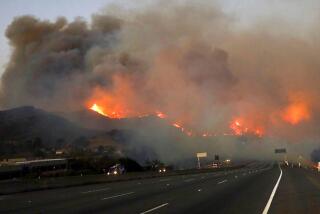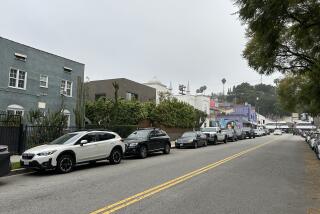Council to Study Fee to Fund Sylmar Fire, Library Facilities : Public services: If enacted, the one-time levy would only affect builders in the city’s fastest growing area.
The Los Angeles City Council on Tuesday approved studying the feasibility of levying a one-time fee on developers to fund new fire and library facilities in Sylmar, the city’s fastest growing community in the 1980s.
The study is needed because Sylmar’s booming population has outstripped local city services, rendering them deficient, according to Councilman Ernani Bernardi.
“This area is badly in need of new public facilities,” he said Tuesday.
In the 1980s, Sylmar’s population grew by 44%, with the community ending the decade with 60,000 residents, according to the 1990 census.
Construction of apartments and condominiums in Sylmar increased nearly 150% in the 1980s.
If enacted, the special developer fees would fall only on Sylmar-area builders and would be the city’s first use of such a tool to pay for local library and fire facilities, according to a city budget office report.
Because of the inability of Sylmar’s Fire Station 91--at Polk Street and Borden Avenue--to meet response-time standards at outlying developments, the city is requiring some new residential projects to install fire sprinkler systems, a condition not generally required in the city, said David Mays, Bernardi’s chief deputy.
“The community has expressed the concern that there should be two new stations to replace the existing one--one at the east, the other at the west end of the community,” Mays said.
Two major approved developments in the area--Sunset Farms, a 2-million square-foot business park on 262-acres, and Carey Ranch, a 350-unit single-family project by developer Kaufman & Broad--have already agreed to participate in whatever future funding mechanism the city might employ to pay for increased public services, Mays said.
Sylmar’s 5,500-square-foot library at Polk Street and Glenoaks Boulevard is also inadequate, Bernardi’s top aide said. “This library was built 20 or more years ago, and is one of the smaller models,” Mays said. “Other libraries like it in the city are being replaced with new facilities with community meeting rooms and substantially more book storage space.”
Also at Bernardi’s direction, the city has been reviewing since February, 1990, the further possibility of establishing property tax assessment districts under the state Mello-Roos law as a way to pay for new public buildings.
But before this mechanism could be approved, two-thirds of the affected property owners would have to approve creation of the districts.
More to Read
Sign up for Essential California
The most important California stories and recommendations in your inbox every morning.
You may occasionally receive promotional content from the Los Angeles Times.










